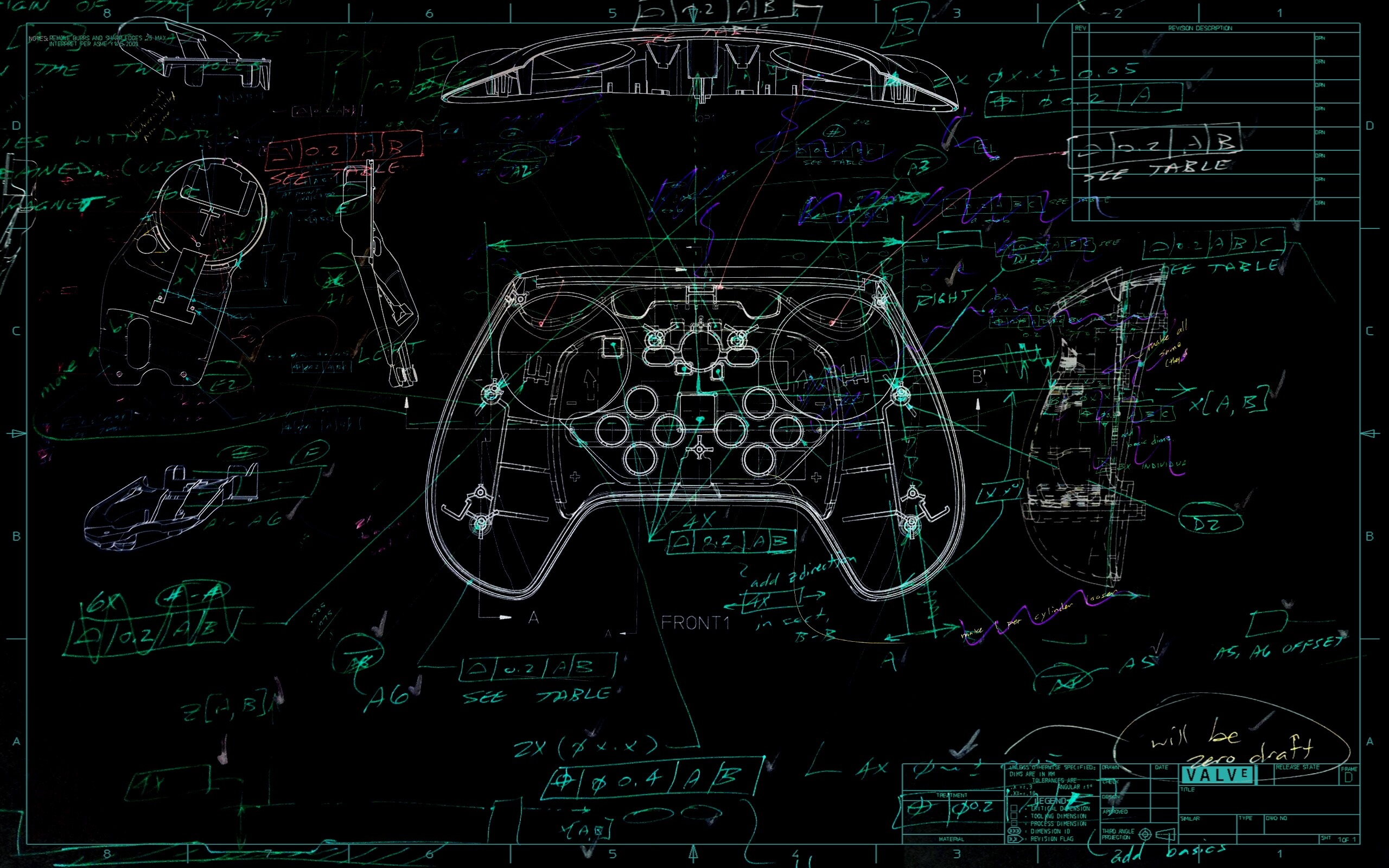2012 was an important year for Valve. The company introduced Big Picture Mode - a Steam interface designed for the living room holy trinity of big TVs, joypads, and couches - it was also the year when Gabe Newell's behemoth revealed it was considering the development of a video game console. The press quickly gave this PC hybrid device an unofficial name: The Steam Box.
Valve being Valve, things went a bit quiet for a while on the announcements front. But in late September 2013, everything arrived at once; the Linux-based Steam OS, the Steam Controller, and the console-style PCs, named Steam Machines, were unveiled. The company called the mini computers "a powerful new category of living room hardware."
A year later in the run-up to CES, Newell announced 13 hardware partners that would make the machines, based on Valve's designs. They included heavy hitters like Alienware, Digital Storm, and Gigabyte. When asked if he could beat the then 3 million Xbox One consoles that had been sold, Newell replied: "It's going to take a lot for them to catch up. We're at 65 million," referring to the number of Steam accounts.
"If I buy a game on Steam and I'm running it on Windows, I can go to one of the Steam machines and already have the game. So you benefit as a developer, you benefit as a consumer in having the PC experience extended in the living room."
But today, Steam Machines feel like an embarrassing late night text Valve sent when it was drunk and now refuses to acknowledge. Which begs the question: what went wrong?
Launch
Yet again, Valve's legendary love of taking its time meant the first official Steam Machines weren't made available to the public until November 2015. Many launched with a variety of configurations to choose from, and all in a small, living-room-friendly form factor. Quite a lot like a SFF PC, but only able to support games that work on Linux, and not as powerful - even when using the same hardware.
Yes, after Valve boasted in 2012 that SteamOS allowed for a huge performance boost on an OpenGL-powered Linux port of Left 4 Dead 2, a 2015 report showed that when using a dual-boot machine, Windows 10 ran five out of six games noticeably faster than Valve's OS. Even Left 4 Dead 2 was faster, though only marginally.
The chart below is taken from this Ars Technica article testing Steam OS 2.0 performance:
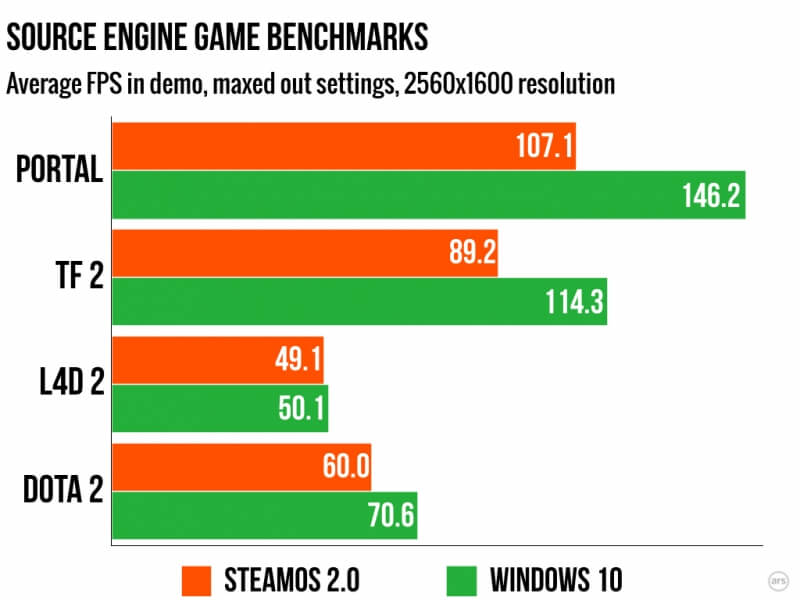
While a lack of Linux optimization, especially when it comes to video cards and the games themselves, was put forward as the main reason behind the results, many saw it as another excuse not to buy a Steam Machine.
Then there's the Steam controller. Most gamers weren't enamored by Valve's attempt to bring the functionality of a mouse to a gamepad by adding configurable touchpads, and there were complaints about its questionable build quality. Since its launch, however, the controller has slowly gained traction, helped by Valve releasing the device's CAD files last year so people could mod it.
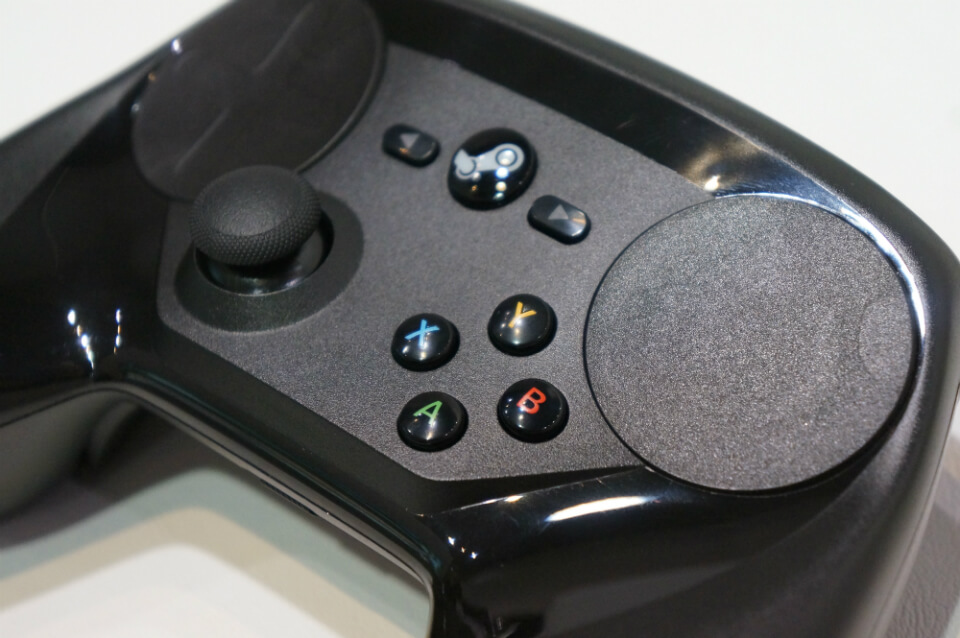
Probably the biggest issue holding back the Steam Machine at launch was the aforementioned fact they only run games that have Linux versions. Three of the platform's biggest titles in recent years: The Witcher 3, Grand Theft Auto 5, and Metal Gear Solid V, still aren't supported, which is a big problem for a machine aimed at gamers.
Sales
Unsurprisingly, Valve has never been forthcoming when talking about exact Steam Machine sales figures. But in June last year, the company revealed it had sold just over 500,000 Steam Controllers since launch - a figure that includes those packaged with every branded Steam Machine. Not only does this mean that fewer than half a million Steam Machine were sold in the six months since their release, but when accounting for Windows gamers who purchased a controller, along with any Steam OS users who bought more than one, the actual figure is likely much lower than 500,000. The Xbox One and PS4, by comparison, both sold 1 million units on their first day, and, over the next seven months, Microsoft shipped 5.5 million Xbox Ones while Sony's PS4 reached 10.2 million units.
Today
Right now, Steam's site lists four official sellers of its Machines: Maingear, Material.net, Scan, and Alienware. While there are plenty of other retailers not listed, I decide to check out the ones Valve suggests.
Alienware
Alienware, whose UK website boasts of Steam OS's "Massive game library" (Over 990 games or 1200 games, depending on what part of the page you read) including Portal 2, Borderlands: The Pre-Sequel, and Dying Light - seems this hasn't been updated in a while.
Things are bit better over on the Alienware's US site, where the Steam Machines are available in multiple configurations going up to Core i7 6700T, 8GB RAM, 1TB HDD, and a GTX 960 for $900. But why buy that when, for $50 more, you can get an almost identical-looking, living room-friendly Alienware Alpha that comes with Windows 10, 16GB RAM, and a M.2 PCIe SSD?
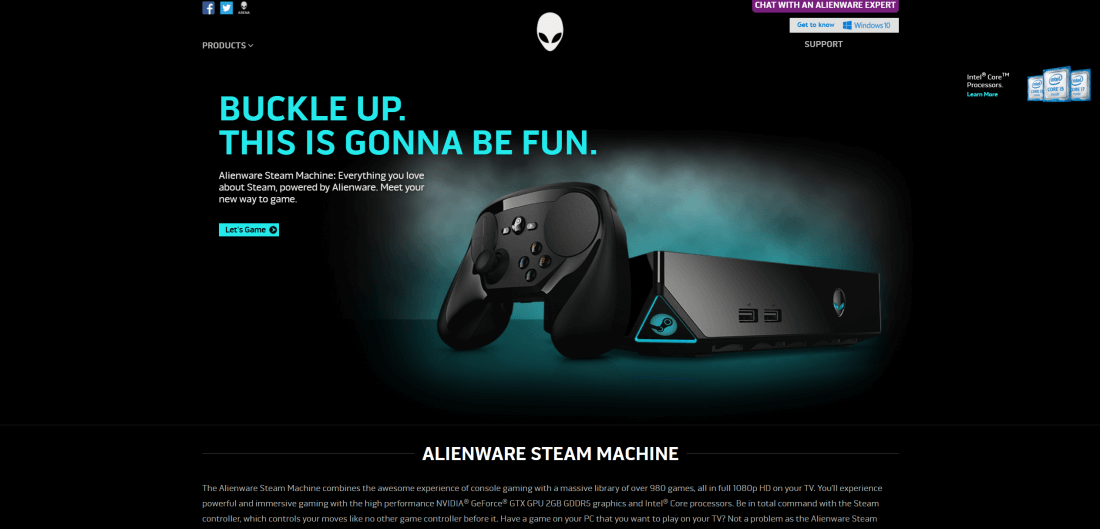
Maingear
Visiting Maingear's site, I was interested to see that their take on the Steam Machine, the Drift, could be specced up to a Titan X. It sounds very impressive: liquid cooling, SSDs, up to 16GB of DDR4. But clicking on both the "performance" and "Enthusiast" option brought up the message, "This product is no longer active in our catalog." Hmmm...
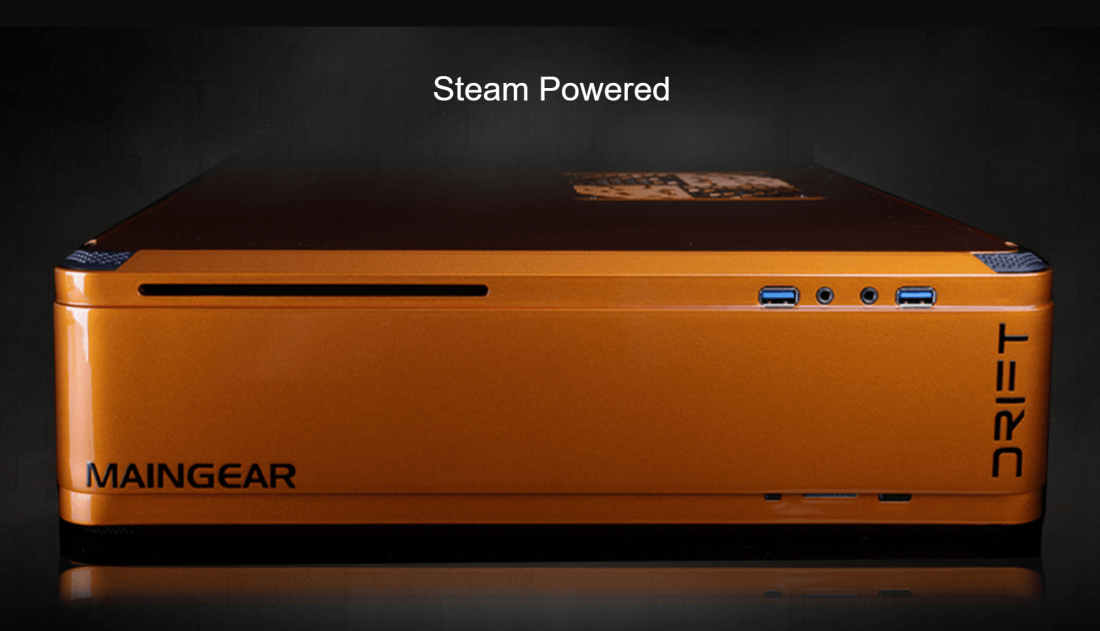
Material.net
Next, it's over to the French Material.net site. Strangely, the link from Steam doesn't show a page of Steam Machines, but some generic gaming PCs; are they trying to hide Valve's boxes? Doing a search on the site itself does bring up a single Zotac Steam Machine. The specs - GTX 960, i5-6400T - are pretty uninspiring, though it does have a 5-star rating. On closer inspection, however, it seems only one person has ever left a review. I wonder if it was a Mr. Nabe Gewell.
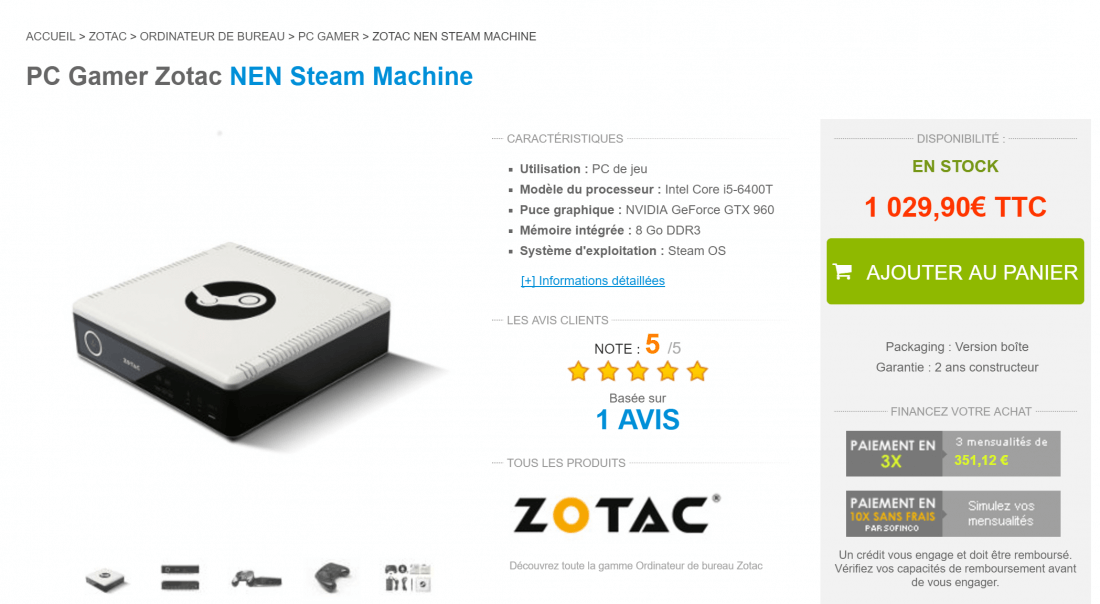
Scan
Finally, I jump over to the site where I buy almost all of my PC equipment, Scan.co.uk. It contains a huge amount of info on Steam Machines, along with promos for some more modern titles like Civilization V, Rust, and even Football Manager 2017. I excitedly click on the 'Steam Machine configuration' link, and I'm taken to... the previous page! What the...?
As with Material.net, I find a manual search of Scan's website yields better results. There are two options: mid-range and high-end, and they both appear to be very compelling. Configurable up to Core i7 7700, GTX 1080, SSDs, etc. But what really catches my eye is the option to add Windows 10 and make it a dual-boot system, essentially solving the machine's biggest drawback. It does, however, cost an extra £93 ($119) for the privilege, and you can always get one of their many better (and usually cheaper) pre-built gaming PCs that come with Microsoft's OS as standard.
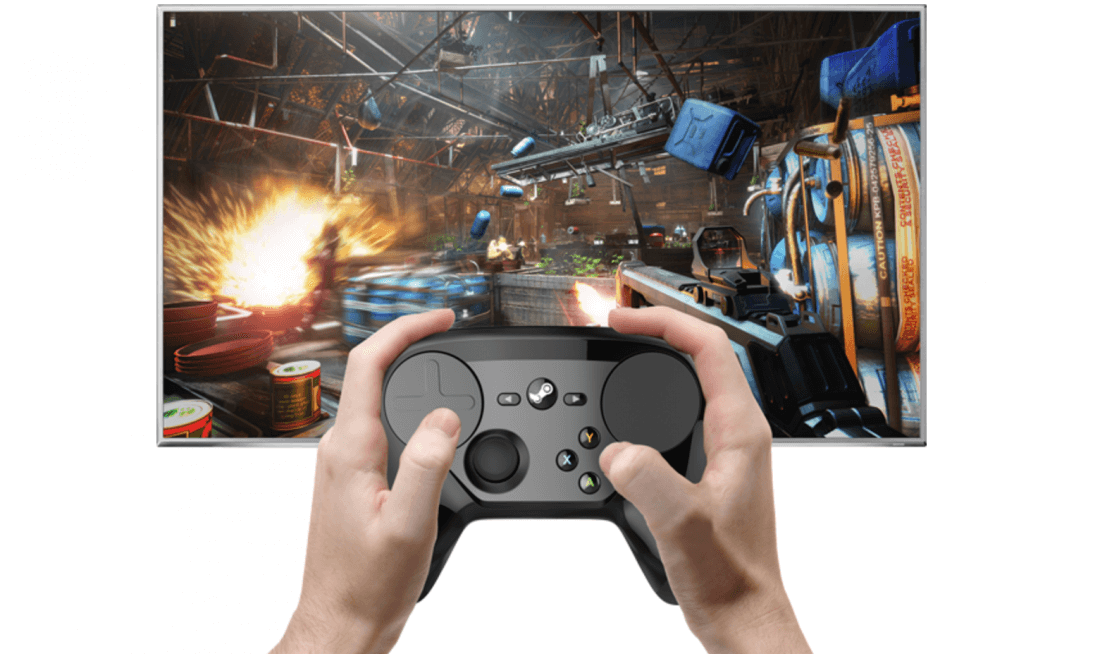
As a final experiment, I visited three large, independent PC retailers near where I live. None of them sold Steam Machines, and never have.
Streaming
While the Steam Machine's OS is limited to Linux games, you can always play Windows titles using the streaming option. This does, of course, mean you'll already need a beefy PC (and a good network) to stream from. Moreover, if streaming to your living room TV is the route you want to take, Valve offers a much cheaper and better solution: The Steam Link.
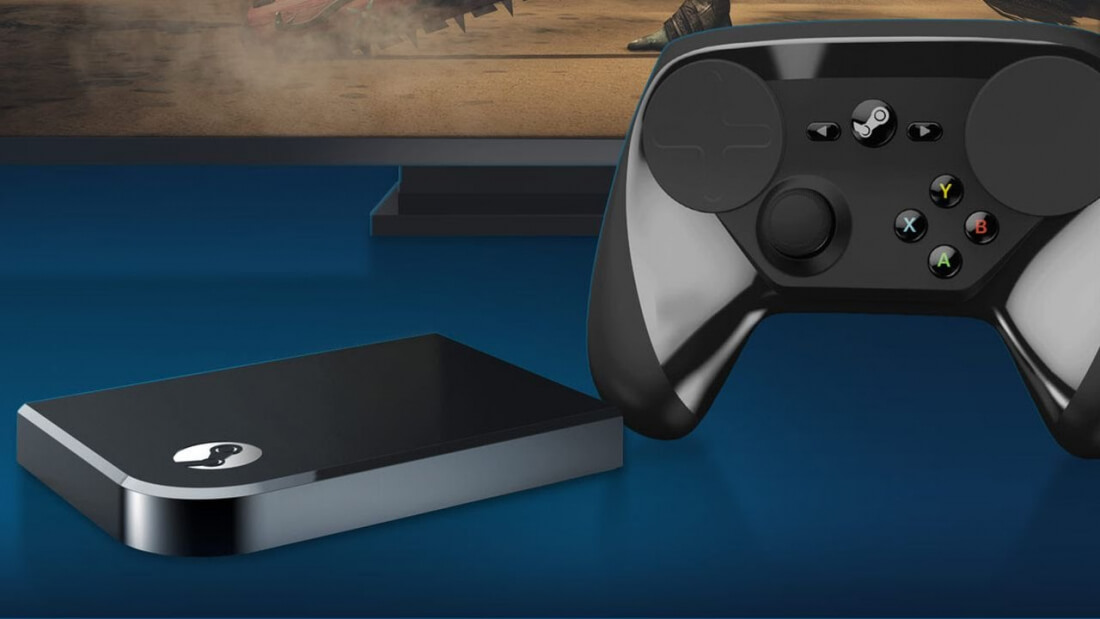
The Steam Link may not go above 1080p and 60fps, but for those that already own a gaming PC, it's the best way to enjoy your favorite titles in another room. I love mine and have never experienced any problems, though some reviewers complain about bugs. The device is said to offer a smoother experience than when streaming to a Steam Machine, so it seems Valve has cannibalized the market for its mini PCs with this $50 device.
If you're a fan of streaming and Samsung TVs, good news: the Korean company plans on integrating the Steam Link into some of its future televisions, or at least that's what they said late last year.
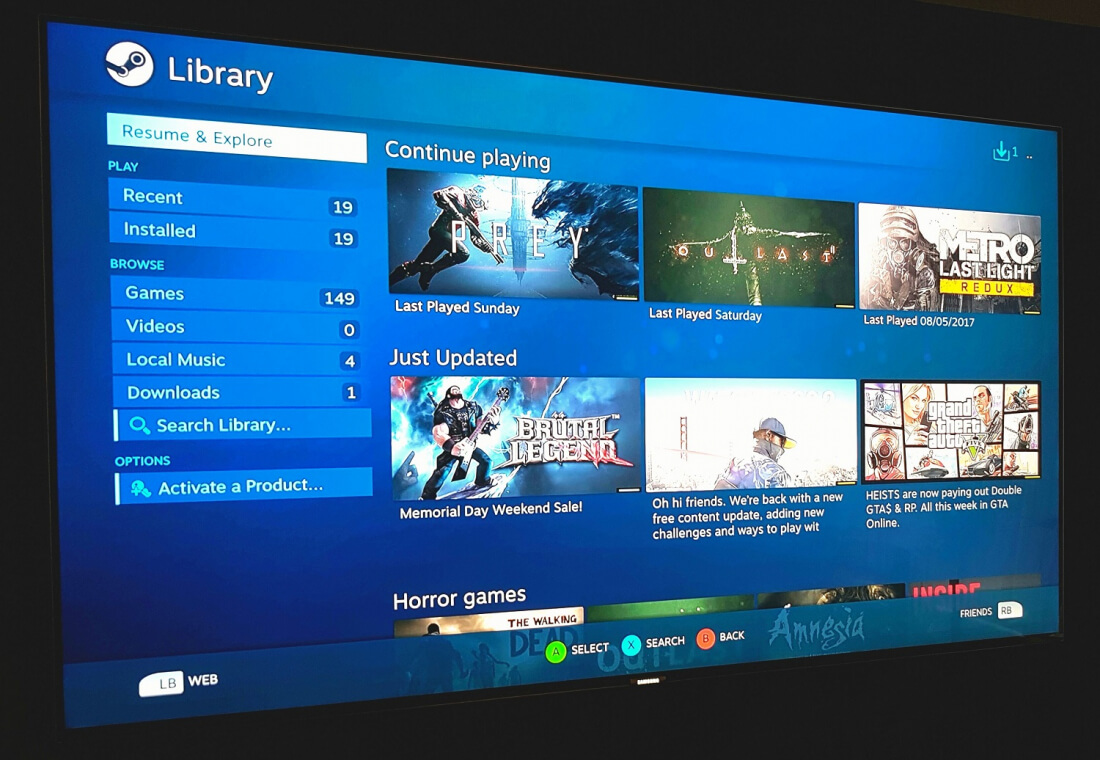
So, what did go wrong?
It may be cliched, but the line that's so often used when talking about Steam Machines is an accurate one: Who are they for? Valve liked to push the narrative that they offer the best of what a console and a PC has to offer, when in reality they aren't as satisfying as either.
If someone is agonizing over whether to buy an Xbox One or a PlayStation 4, they're certainly not going to think "Hmmm... maybe I should get a Steam Box instead. I wonder how many exclusive titles they have..." And most PC gamers are unlikely to consider one, especially with the amazing mini-ITX/micro-ATX systems available, living room peripherals like the Roccat Sova, and, again, the Steam Link.
Gabe Newell has never hid his distaste for Microsoft - he called Windows 8 "a catastrophe for everybody in the PC space" in 2012 and talked about needing platform alternatives. But his fears of a closed and controlled Windows Store, essentially turning the PC into a walled garden, hasn't happened, though it's something Epic Games' co-founder Tim Sweeney has also expressed concerns about.
In reality, it's hard to imagine the all-powerful Steam being brought to its knees by the Windows Store, which still has plenty of problems.

The Future
While Steam Machines are still available, and I know some people who genuinely enjoy theirs, I fully expect them to fade away over the next few years. The future of gaming has never looked so exciting: Nvidia and AMD's incredibly powerful GPUs, new thin laptops that can run 4K games, increasingly smaller living room PCs, and even Microsoft's Project Scorpio (Xbox One X). But it's a future that doesn't seem to include Steam Machines.
I love Valve and Gabe Newell for what they've brought to my favorite gaming platform over the last 13 years. And they should be applauded for trying to bring PCs, and Linux gaming, to more people. But maybe Steam Machines were an answer to a problem nobody had. Round two, anyone?
